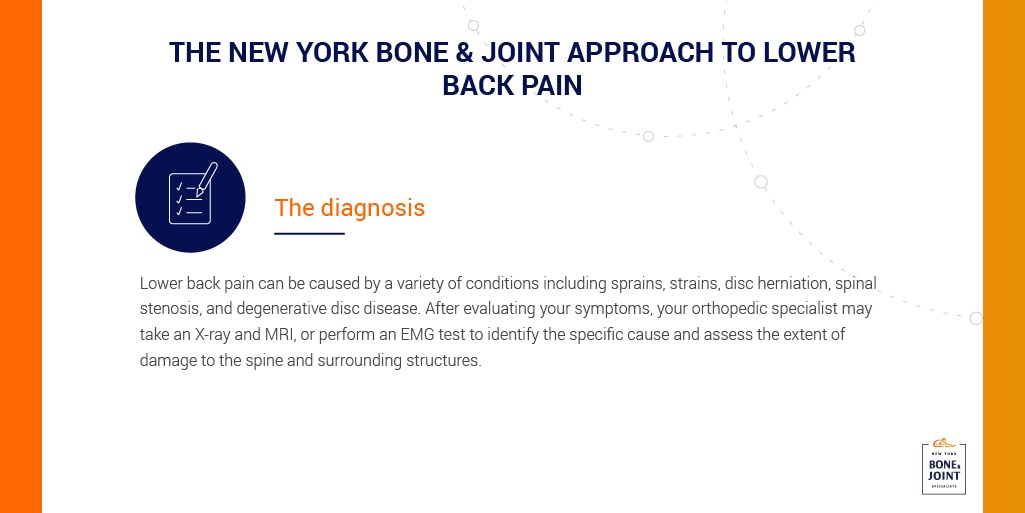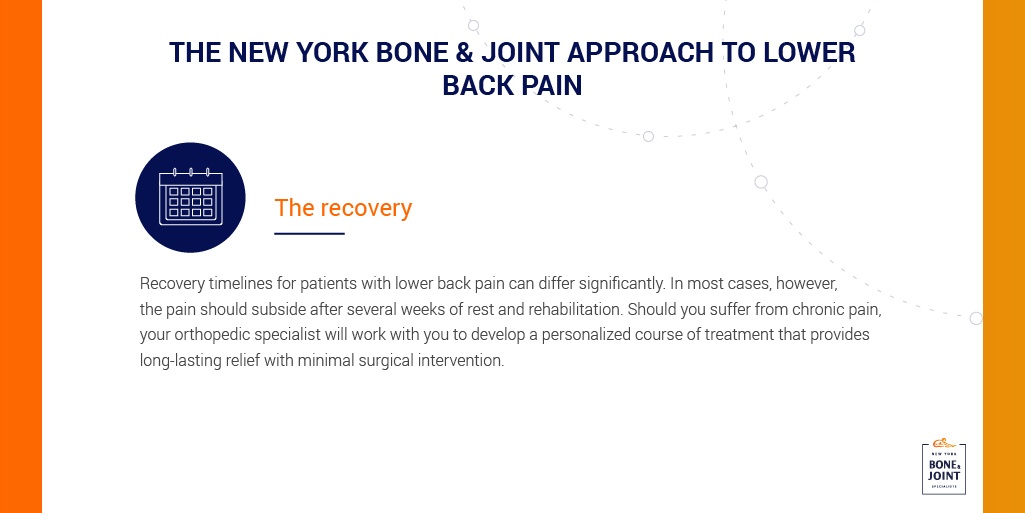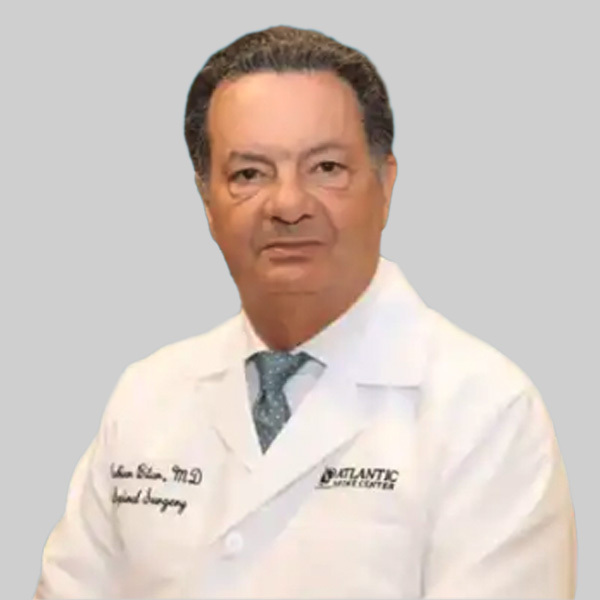The back is composed of a complex network of bones, tendons, muscles, and ligaments that run opposite the chest. It’s centered around the spinal column, which bears the weight of the upper body and encases the spinal cord. Since the central nervous system is largely concentrated in the spinal cord, the back can be particularly susceptible to chronic or recurrent pain, especially in the lower (or lumbar) region.
Although lower back pain is extremely common — nearly everyone experiences it at some point — the symptoms, severity, and duration of back pain vary greatly from person to person. In many cases, back pain resolves on its own within a few weeks, but in others, it’s severe enough that it needs to be assessed and treated by an orthopedic specialist.
LOWER BACK PAIN CAUSES
What Can Cause Lower Back Pain?
A broad assortment of injuries and conditions can cause lower back pain. Indeed, a sudden fracture, scoliosis, or simple overuse could all irritate the lumbar nerves. Some of the most common causes of lower back pain include:
LOWER BACK PAIN SYMPTOMS
The specific symptoms of lower back pain generally depend on the cause, but the most common symptoms include:
- A sharp, shooting, or stabbing pain in the leg or buttock
- Chronically aching muscles
- A restricted range of motion in the back
- An inability to stand up straight
- Pain or discomfort when attempting to bend, stand, walk, lift objects, or sit
LOWER BACK PAIN DIAGNOSIS

LOWER BACK PAIN RELIEF AND TREATMENT

Treatments for lower back pain vary from patient to patient, but in most cases, symptoms can be effectively managed with conservative measures like physical therapy. Other patients respond well to alternative approaches, such as acupuncture and yoga. In general, surgery is necessary only if these non-invasive courses of treatment fail to relieve your pain.
Conservative Treatment
Conservative treatments for lower back pain are designed to relieve pain and inflammation and restore a complete range of motion. In most cases, some combination of medication and physical therapy proves highly effective.
Here’s a full list of conservative treatments that your orthopedic specialist may recommend:
- Physical therapy
- Over-the-counter anti-inflammatories
- Prescription anti-inflammatories
- Cold and/or hot compresses
- Regular stretching
- Sleeping on your side with a pillow between the knees
- Trigger point injections
- Sacroiliac (SI) joint injections
- Lumbar epidural steroid injections
Surgical Treatment
While most cases of lower back pain respond well to conservative treatment, particularly severe or persistent pain may be best treated with surgery. Should it be necessary, your doctor will refer you to a qualified orthopedic surgeon who can evaluate your condition and determine the best course of action.
If you’re searching for a doctor who can address your lower back pain, the talented team of specialists at New York Bone and Joint is here to help you. With decades of combined experience in treating lower back pain, we’re committed to developing a personalized treatment plan that provides long-lasting relief with minimal surgical intervention.
Recovery

_________________________________
EXPERIENCING PAIN? DO YOU HAVE AN INJURY?
Our Specialists are here to help.
Book an appointment with NYC’s best orthopedic specialists to discuss your condition. Fill out the form below and you will receive a call from our office within 5-10 minutes. We’ll book an appointment at a time and location that work for you, and send you a reminder by email.










